India budget 2023: What happened to last year's pledges?
- Published
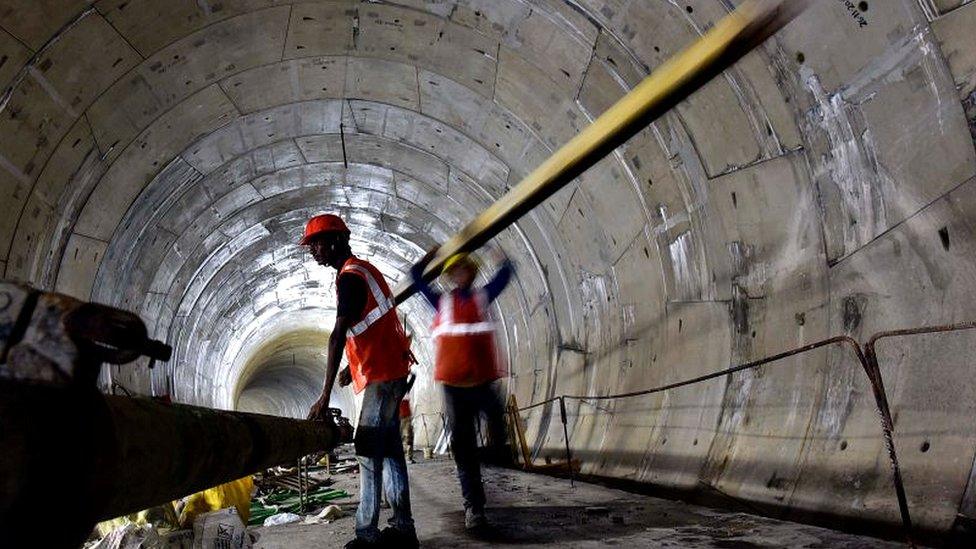
The pace of road construction has slowed this year
The Indian government will present its last full budget on Wednesday before the country holds elections in 2024.
We've looked at official data to see what progress the Bharatiya Janata Party (BJP) government has made since last year's budget pledges.
Economic growth and spending promises
In her 2022 budget, Finance Minister Nirmala Sitharaman said that India's economic growth in the current fiscal year (to the end of March 2023) was "estimated to be 9.2%, [the] highest among all large economies".
But with fears of a global recession and energy prices rising after the war in Ukraine, that growth projection was revised down to 6.8% last December by India's central bank.
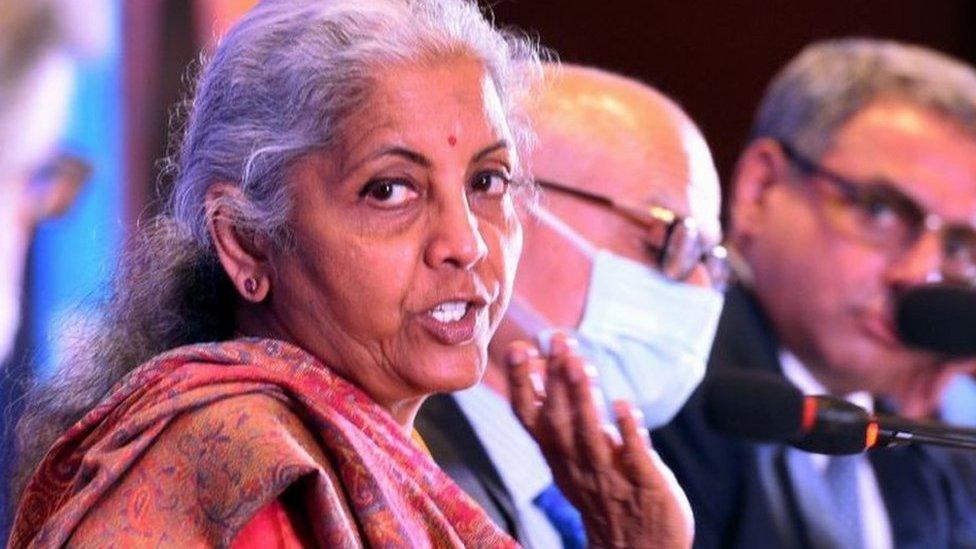
Finance Minister Nirmala Sitharaman
Even so, the World Bank has said that India is expected to be the "fastest growing economy" of the seven largest emerging and developing economies globally.
International Monetary Fund (IMF) managing director Kristalina Georgieva said this month that India was performing "better than the global average", external.
According to government statistics, India's GDP growth was 13.5% in the first quarter of the financial year (starting in 2022), but fell to 6.3% in the second quarter as the manufacturing sector slowed due to higher raw material costs and energy prices.
Dr Aurodeep Nandi, of the Nomura financial services group, says it has been up and down this past year for fiscal math.
"There were slips along with gains in the fiscal deficit, while government expenditure is looking to slip, it should be counter-balanced by stellar tax revenues and higher GDP growth" he says.
India's fiscal deficit target - the difference between total spending and revenue which the government promised would be kept at 6.4% of GDP - has been maintained at that level so far, according to RBI figures.
The target this year was set lower than in 2020 (9.1%) and 2021 (6.7%) as Covid-related demands on government finances have eased .
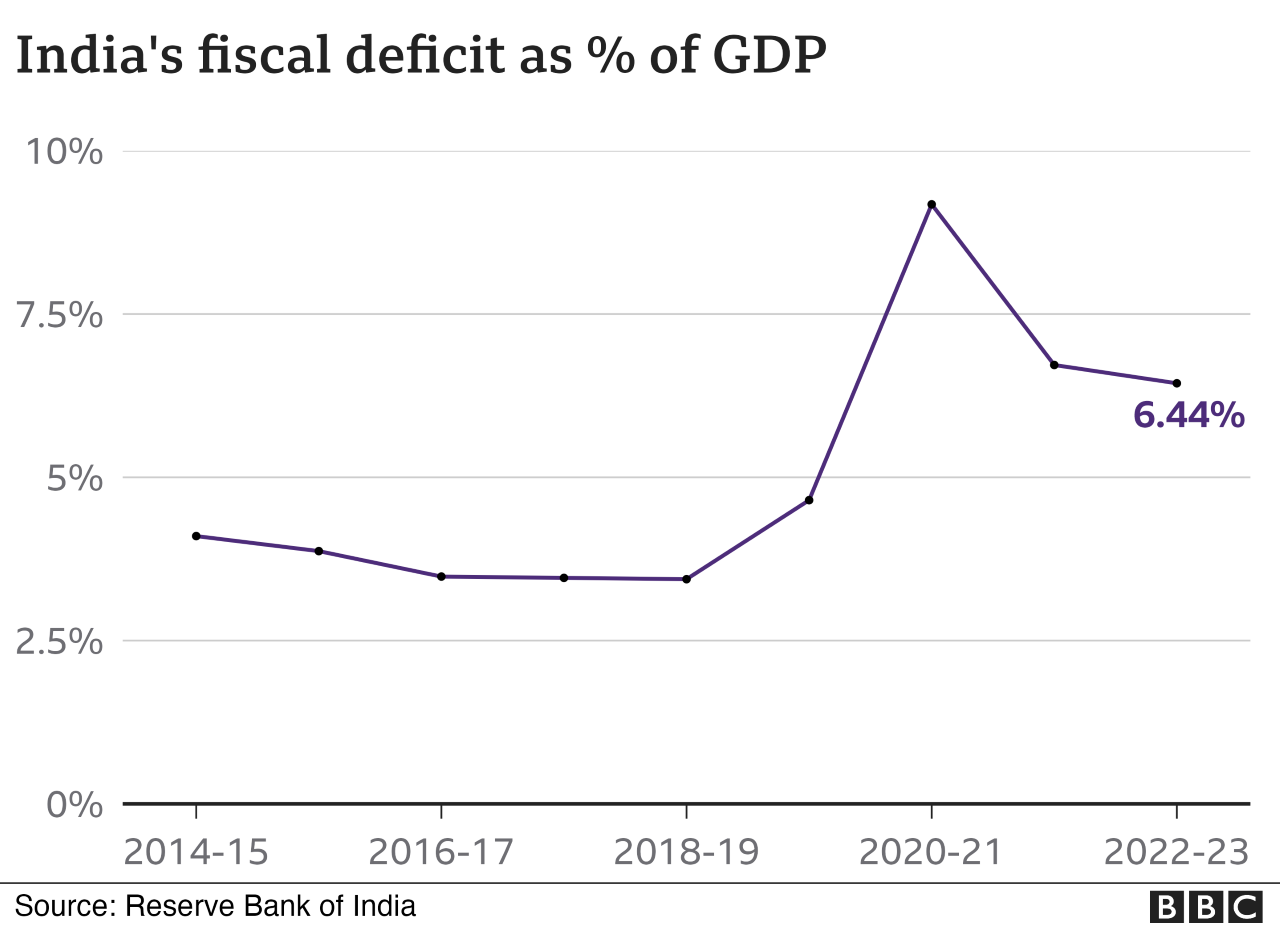
However, the government's target to keep its expenditure to 39.45 trillion rupees ($4,800bn; £3,800bn) for the fiscal year will be not be met due to higher import costs, and subsidies on food, fuel and fertiliser.
"India is expected to exceed its budgeted expenditure by 1.1% of GDP by the end of this fiscal year," says to Dr Nandi using estimates by Nomura.
Welfare pledges lag
The housing-for-all scheme, Pradhan Mantri Awas Yojana (PMAY), was launched in 2015 and is one of the flagship welfare projects of the Narendra Modi government.
In the last budget, 480bn rupees ($59bn; £47bn) was allocated for building eight million homes for eligible beneficiaries in rural and urban areas in 2022-23.
The schemes for rural and urban areas are implemented by different ministries.
The ministry of housing and urban affairs - which oversees the urban part of the scheme - said it was behind target and sought an extension of the deadline and further financial assistance from the federal government in August last year.
The deadline has been pushed back to December 2024.
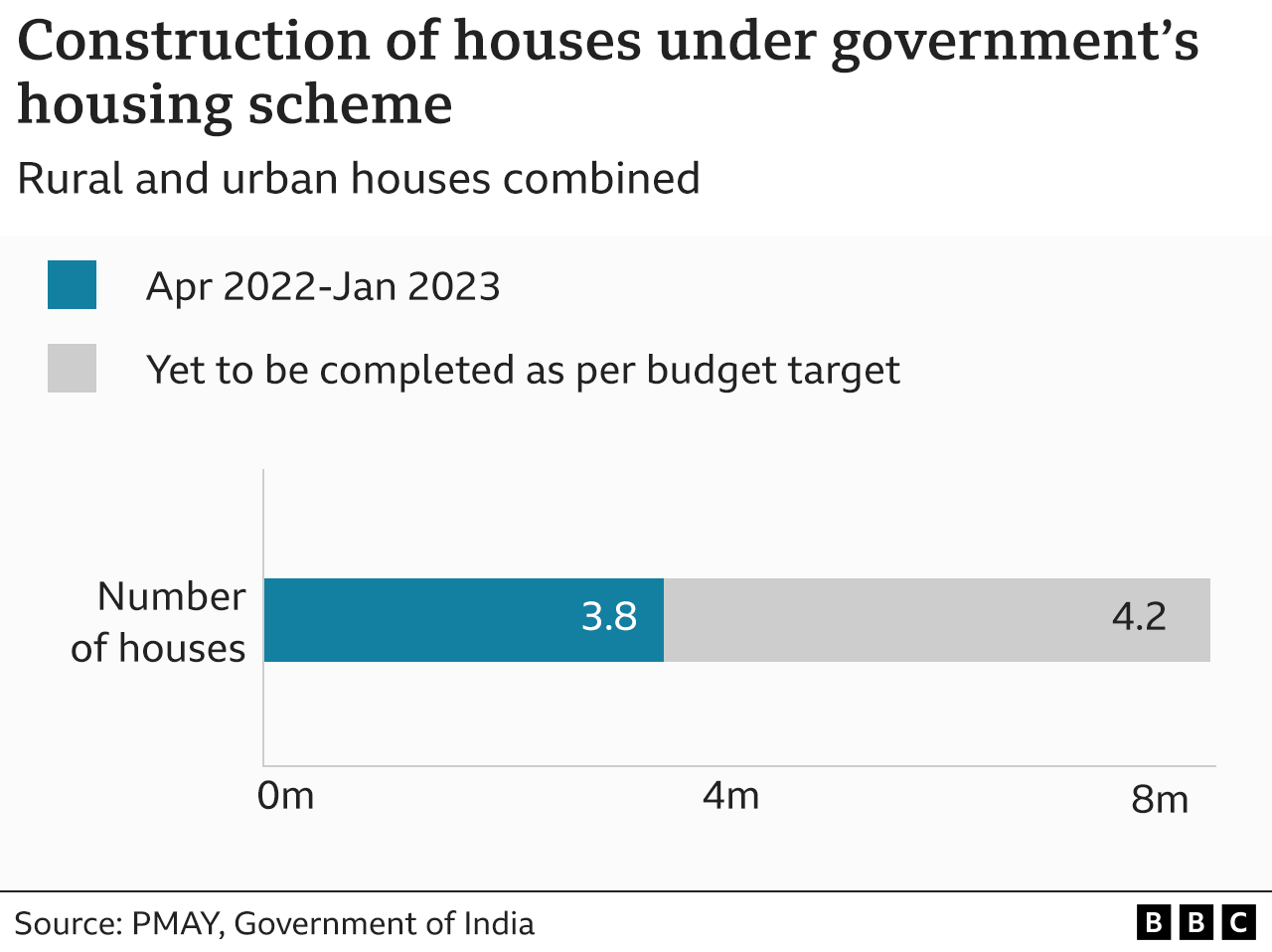
In the current fiscal year from 1 April 2022, there's data up to 23 January 2023. This shows 1.2 million houses were completed in urban areas, while under the rural part of the scheme, 2.6 million houses were built., external
That means the government is currently 4.2 million homes short of its target overall.
The finance minister also allocated 600bn rupees ($74bn; £60bn) with an "aim to cover 38 million households in 2022-23" with piped water connections.
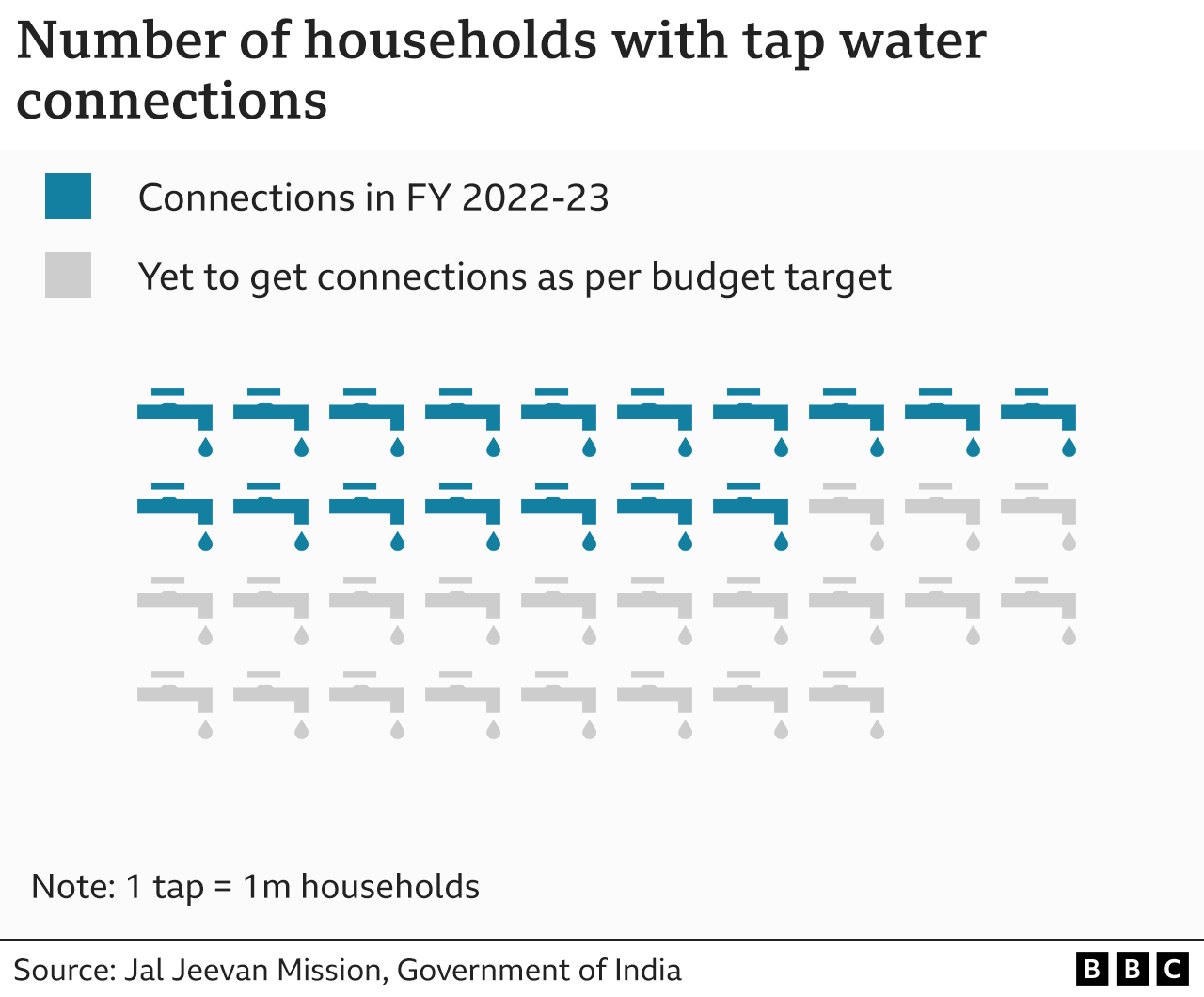
According to data from the ministry of water resources, so far only around 17 million households have been given piped water connections, external this year. That's slightly short of 50% of the target.
Since its launch in August 2019, the scheme has provided a total of 77 million households with piped water.
Road building slows down
The finance minister also announced last year that the national highways network would be "expanded by 25,000km (15,534 miles) in 2022-23".
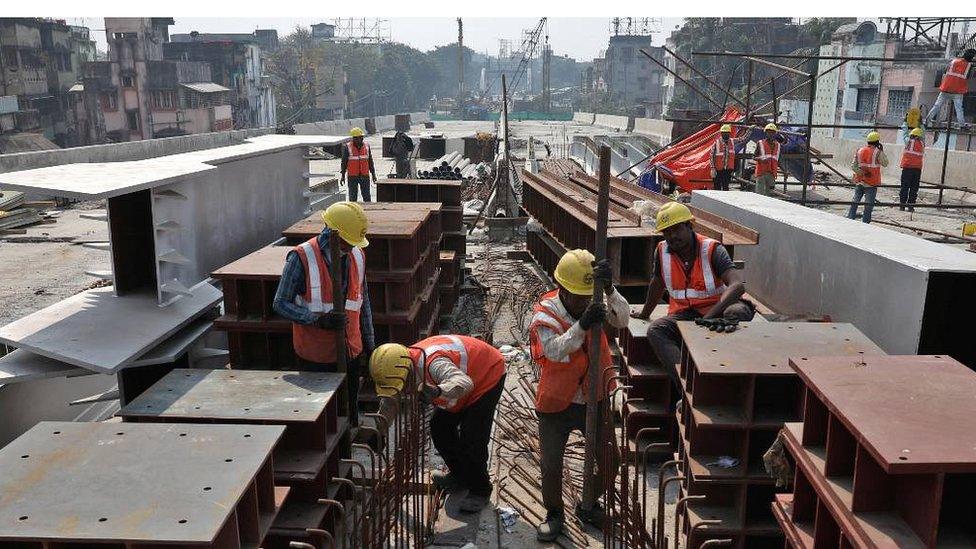
A flyover under construction in Kolkata
The 25,000km would include new construction as well as the development of existing roads and the declaration of state highways as national highways.
Of this, the ministry of road transport and highways set itself a target to build 12,000km (7,456 miles) in this fiscal year.
But the latest data from the ministry shows that only a total of 5,774km (3,588 miles) of national highways were constructed between April and December 2022 - so less than half the target. We don't yet have data for January this year.
Going by data from previous years, the pace of daily construction has slowed this year to around an average of 21km (13 miles) a day from 29km a day in 2021-22 and 37km a day on average in 2020-21.
